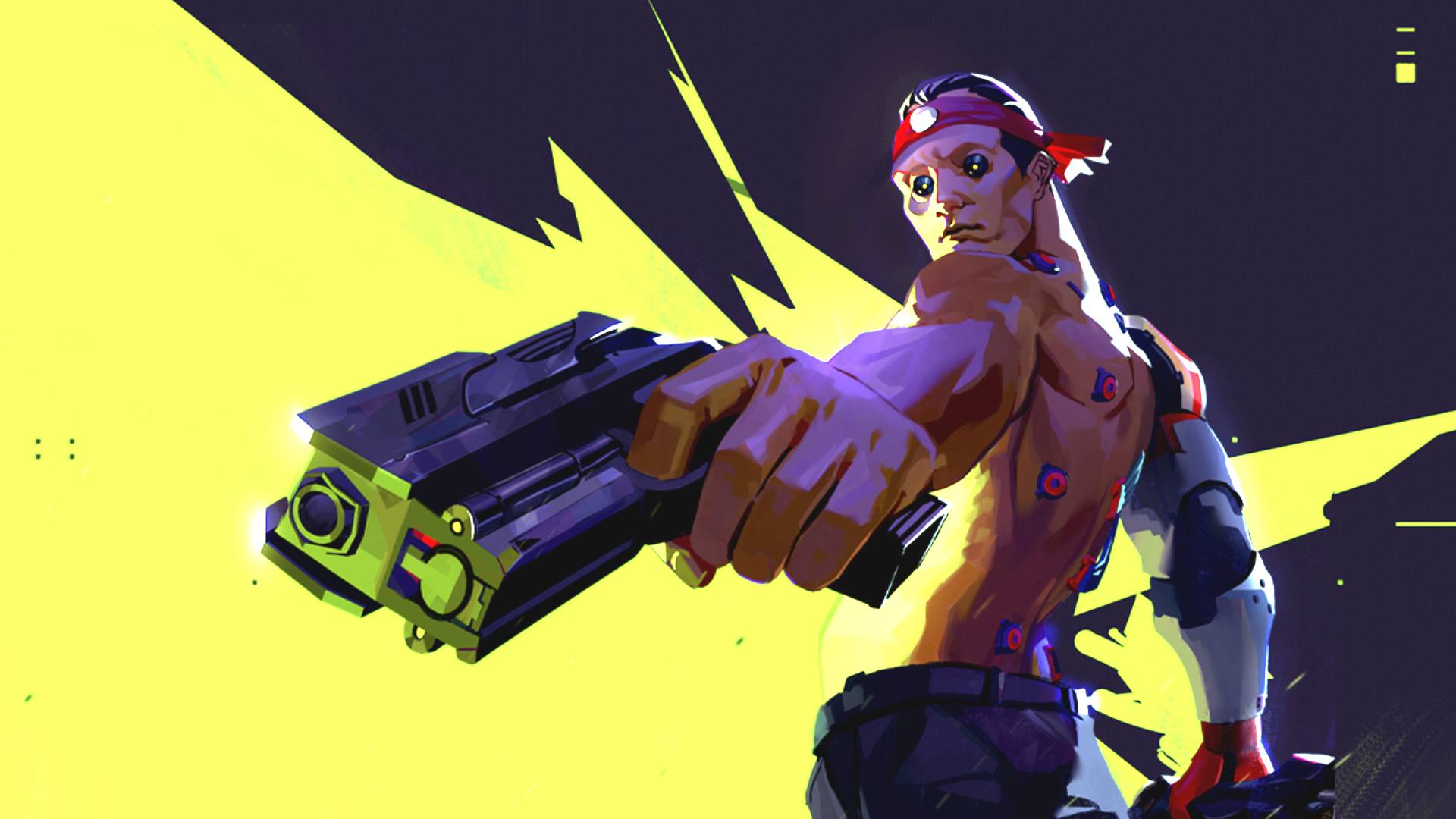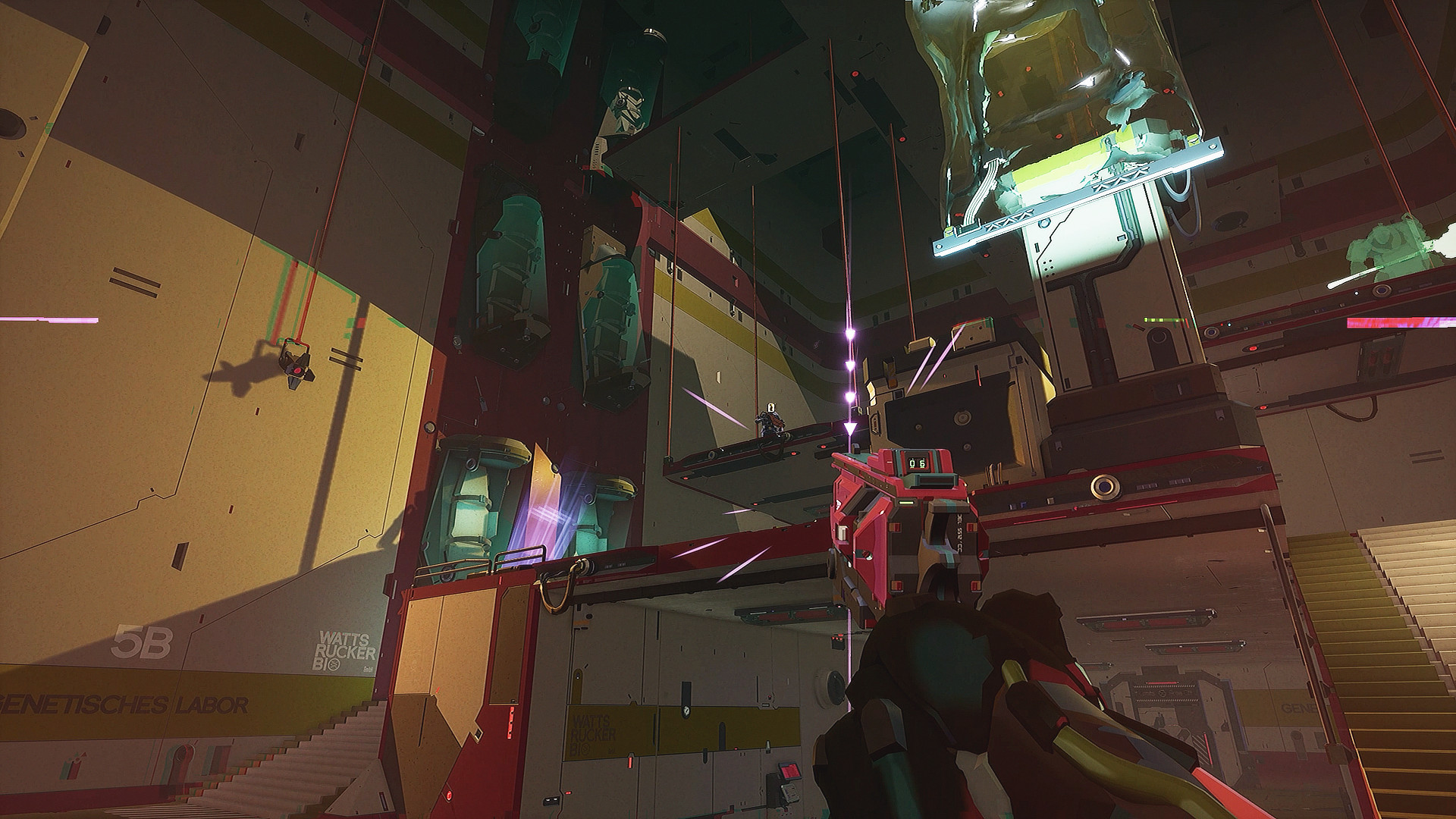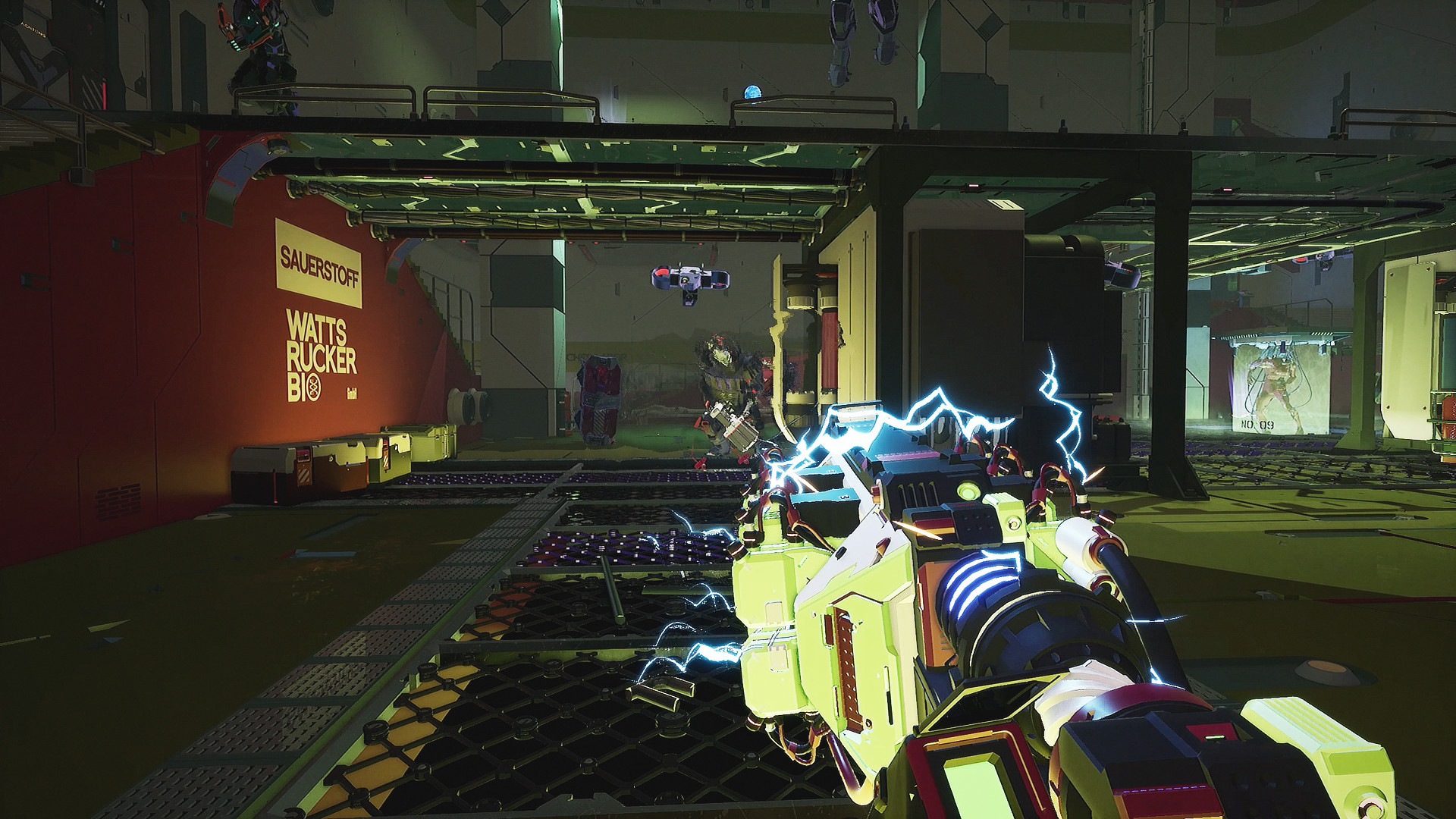Deadlink delivers on the first-person braindance combat Cyberpunk 2077 couldn’t
Fight city

Cyberpunk 2077 is a good game. Sure, it didn’t deliver on all of its promises, but a rollercoaster ride through its gorgeous shooting galleries remains a great weekend getaway. Then, once you’re done touring Night City with Keanu Reeves and are itching for a new neon-lit underbelly to explore, consider chippin’ into Deadlink.
The gritty cyberpunk aesthetic is alive and well across Deadlink’s assembly of enemies, weapons and autonomous Combat Shells. The roguelite first-person shooter lets you control one of said Combat Shells from afar, clearing arenas of foes, one round at a time. Each Shell offers unique weapons and modes of enemy disposal – think of the braindances in Cyberpunk 2077, but with a murder bot that follows your orders.

While the final game will certainly feature more gun variety and enemy types, I was only able to test a two-weapon loadout in a single set of stages. The game’s fluid movement system lets you dash and grapple across its arenas as you face dozens of targets, ranging from meat shields to nimble, teleporting ninjas. Deadlink’s grappling hook ties in neatly with its ammo system – floating orbs scattered across the field serving as both grapple points, and ammo crates when punched.
Deadlink’s acrobatics are a fresh breath of air after Cyberpunk 2077’s mediocre corridor shooting
But those orbs aren’t the only things you can break open. Mark enemies with your abilities and they become walking crates, offering boosts to your shields when taken down. Think Doom Eternal minus the gory executions. Marked enemies even add a Shell to your shotgun when defeated, letting you ride that adrenaline rush for longer. This incentivizes smart play, be it actively marking enemies or weaving in and out of combat situations. Moving in for the kill, picking up a shield boost and grappling away to safety feels glorious in practice.
So gong it's right

Deadlink’s acrobatic combat is a breath of fresh air after Cyberpunk 2077’s mediocre corridor shooting. And better still, it lets you use environmental props to your advantage. For instance, a massive metal gong stuns enemies when you shoot it. Sure, Cyberpunk 2077 gives you a double jump, but the game’s firefights were designed without considering it – turning the ability into a boring ‘get out of jail free’ card. But stand still in Deadlink and you’ll be greeting the main menu screen in no time.
Just like CD Projekt Red, the devs at Gruby Entertainment adopt cybernetic enhancements for their upgrade system. But unlike Cyberpunk’s basic bonuses, Deadlink's upgrades drastically alter the way you interact with the game's enemies, making each run unique.

For instance, poison or electric shotgun ammo. Or body implants that trade health for power. The best part? Some of these implants turn on when you perform specific moves, like switching weapons or breaking one of the aforementioned floating orbs – letting you handcraft your own gameplay loop. These alterations to your borrowed body change the rules of engagement across each Deadlink run.
Sign up for breaking news, reviews, opinion, top tech deals, and more.
Want to get in close? Bump up your health. Or maybe you want to live life on the edge? Adopt a combat build that gives you electric bullets when you swing between orbs, like a robotic Tarzan. Status effects dealt by weapons add an extra layer of strategy, especially when enemies are weak to specific damage types.
Hell squared

Despite only having one Combat Shell to play with, none of my runs played out the same. Deadlink doesn’t save its best tools as purchases from black-market vendors littered across an open-world map. When you manage to clear out an area, gates let you pick between implants, weapon upgrades and a store for gear. If the enemies manage to take your Shell down in combat, resources obtained during your runs can be spent to upgrade your combat form. This turns every defeat into an opportunity, a fuzzy feeling that roguelite enthusiasts will be intimately familiar with.
Deadlink even takes Hades’ Heat Gauge system
Deadlink's devs call it "Doom meets Hades" and it's not hard to see why. The game’s current single boss is accompanied by enemies that, while annoying, serve as walking crates to stock up on essentials as you whittle away the big bad’s health, Doom-style. Deadlink even takes Hades’ Heat Gauge system, letting experienced players amp up the difficulty with modifiers for rewarding runs.

I’d love to see a Hades-esque narrative in a cyberpunk setting – but Gruby intends to focus on its gameplay mechanics. While both Cyberpunk 2077 and Deadlink feature evil megacorporations, the latter didn’t offer much of a story during my time with it. Not that I’m complaining. Deadlink manages to weave multiple systems together with the finesse of a veteran studio, from mobility to damage-dealing and resource management.
While I have no idea why I’m fighting shield-toting sumo wrestlers or stealthy ninjas in the future, I had a great time shuffling and swinging across Deadlink’s arenas. I bet the other Combat Shells will receive just as much attention as the soldier class I got to pick. It’s evident that a great deal of care has gone into tuning the game’s systems so far, and I can’t wait to see more of Deadlink’s nuanced arenas and challenging mobs.

Antony is a freelance contributor at TRG. His writing warps from shooters and strategy games to fiction (to-do lists). Antony's words have found a home across sites like IGN, Rock Paper Shotgun, and Kotaku AU. You'll spot him thriving at both chaotic LAN parties and silent libraries. Or on Twitter.